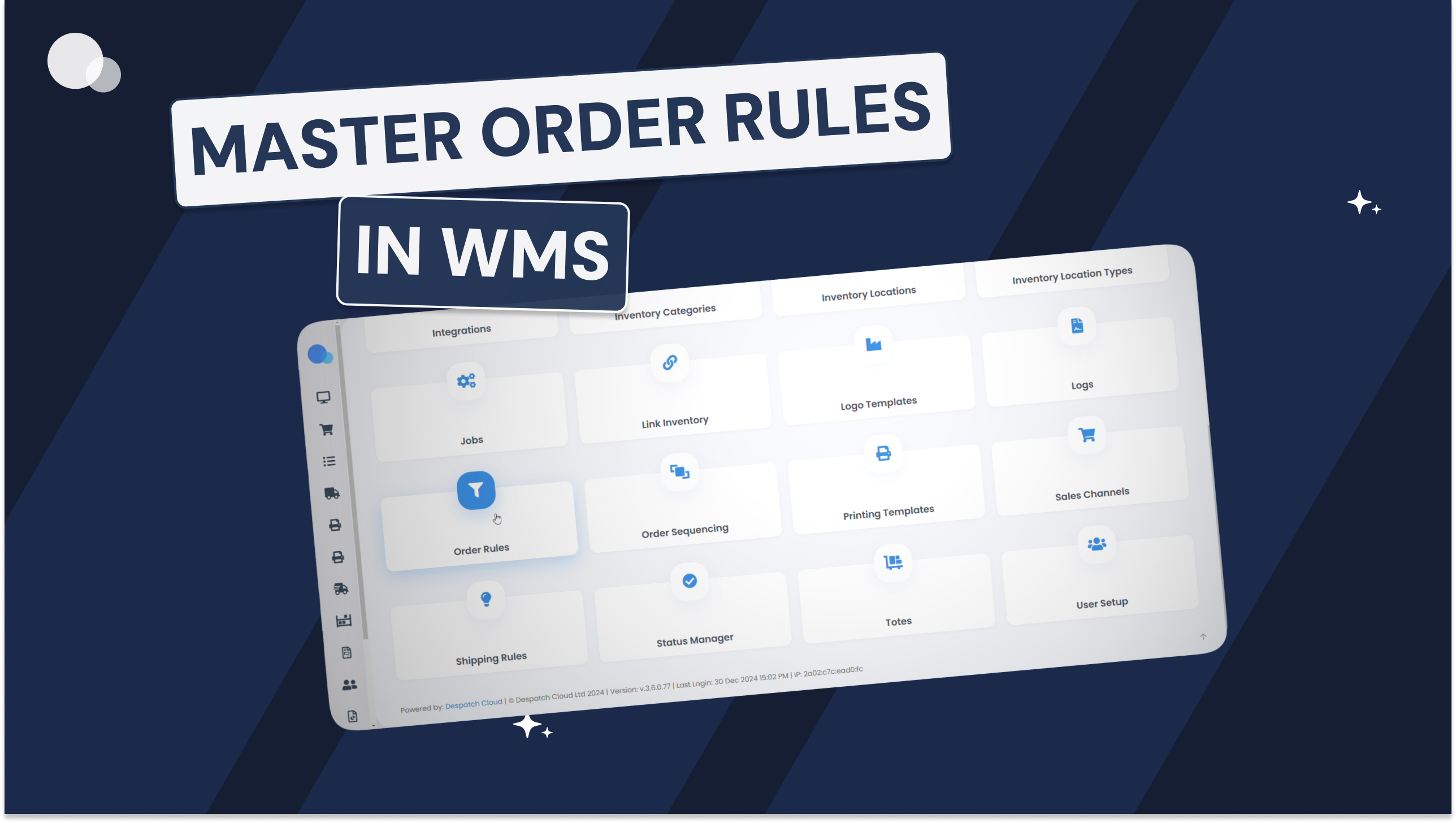Optimise Storage for Peak
Retail sales for the 2024 holiday season are predicted to reach £96 billion according to Statista, a £3 billion increase from last year. If you’re among the thousands of businesses hustling through their peak preparations, this guide is for you.
One of the main challenges businesses face during this time is optimising storage and fulfilment to meet the higher demands of the season. This is aggravated by the competitive pressure and complexities of multichannel selling, requiring businesses to be scalable and flexible to accommodate large variances in volumes and SKU range.
It also requires a robust system to manage stock levels across multiple selling channels and platforms effectively. Many eCommerce businesses face stockouts, overselling and slower deliveries due to fragmented and ineffective processes.
So, how can you address this and safeguard your fulfilment for the busier times? Our experts have identified several strategies you can implement to strengthen and streamline your order fulfilment. Let’s dive in!
Optimise Warehouse Layout
Start by organising your warehouse to minimise time spent picking, packing and shipping orders. High-demand items should be positioned closer to packing stations, reducing the time and distance required to fulfil those orders.
Grouping frequently bought-together items can further streamline the picking process, allowing staff to locate and retrieve items more quickly. Additionally, consider utilising vertical space more effectively by installing tall shelving units and using stackable bins. This approach not only maximises your storage capacity but also helps avoid the need for costly warehouse expansions during the busiest times of the year.
Implement Inventory Forecasting
Analysing historical sales data can help you predict which products are likely to experience high demand. This data-driven approach enables you to stock up on the right items, reducing the risk of overstocking less popular products.
Increase Stock of Popular Items
Once you’ve identified the items that consistently perform well, you can make informed decisions to pre-order these products from suppliers. This proactive approach ensures that you have sufficient inventory on hand to meet increased demand, preventing delays that could result in lost sales.
Bulk ordering can also be a cost-effective strategy, as suppliers often offer discounts for large purchases. Stocking up on popular items not only helps meet customer expectations but also allows your business to operate smoothly during the rush of peak season.
Start Early
How early you should stock up for peak depends on several factors such as your industry, supplier lead times, and storage capabilities.
Typically, we recommend at least 3 to 6 months in advance. Starting early means businesses can secure inventory from suppliers, avoid last-minute rushes, and mitigate potential supply chain disruptions.
Use Temporary Storage Solutions
When existing warehouse space isn’t enough to handle peak-season inventory, temporary storage solutions can be a game-changer. Renting additional storage units or partnering with third-party logistics (3PL) providers offers the flexibility to store excess inventory without long-term commitments.
Another innovative option is setting up pop-up warehouses in strategic locations. These temporary facilities can reduce shipping times by positioning inventory closer to key markets, thus enhancing your ability to meet delivery expectations during peak periods.
Temporary storage solutions provide the extra capacity needed to manage seasonal surges in demand while maintaining efficient operations.
Implement Cross-Docking
Cross-docking is an effective strategy to keep your inventory moving quickly through the supply chain, especially during peak season.
This process involves transferring products directly from inbound delivery trucks to outbound shipping vehicles, minimising the need for long-term storage. By reducing handling time, cross-docking ensures that products spend less time in the warehouse and more time on their way to customers.
To successfully implement cross-docking, it’s important to partner closely with suppliers, coordinating deliveries to match outgoing shipments.
This seamless transfer of goods can significantly reduce operational costs, enhance delivery speed, and improve overall customer satisfaction during the busiest times of the year.
Leveraging Inventory Management Systems
Real-time inventory tracking is another vital component. By integrating advanced inventory management software, you can monitor stock levels continuously across all your online stores. This real-time insight allows you to reorder popular products before they run out, ensuring you can meet customer demand without delays or stockouts.
In summary:
As you gear up for the 2024 holiday season, preparation is key to navigating the challenges of peak demand. By optimising your warehouse layout, forecasting inventory needs, and securing stock well in advance, your business can handle the increased pressure with ease. Leveraging temporary storage solutions and cross-docking can further streamline your operations, ensuring that your fulfilment process remains efficient and responsive.
In addition, businesses can implement automated stock management systems to monitor and manage stock levels across their multiple selling channels, preventing stockouts and ensuring a smooth fulfilment experience.






